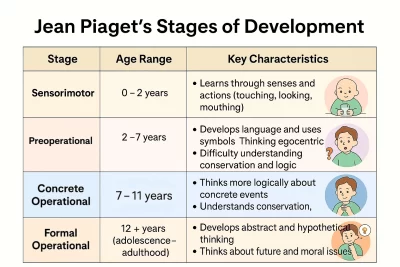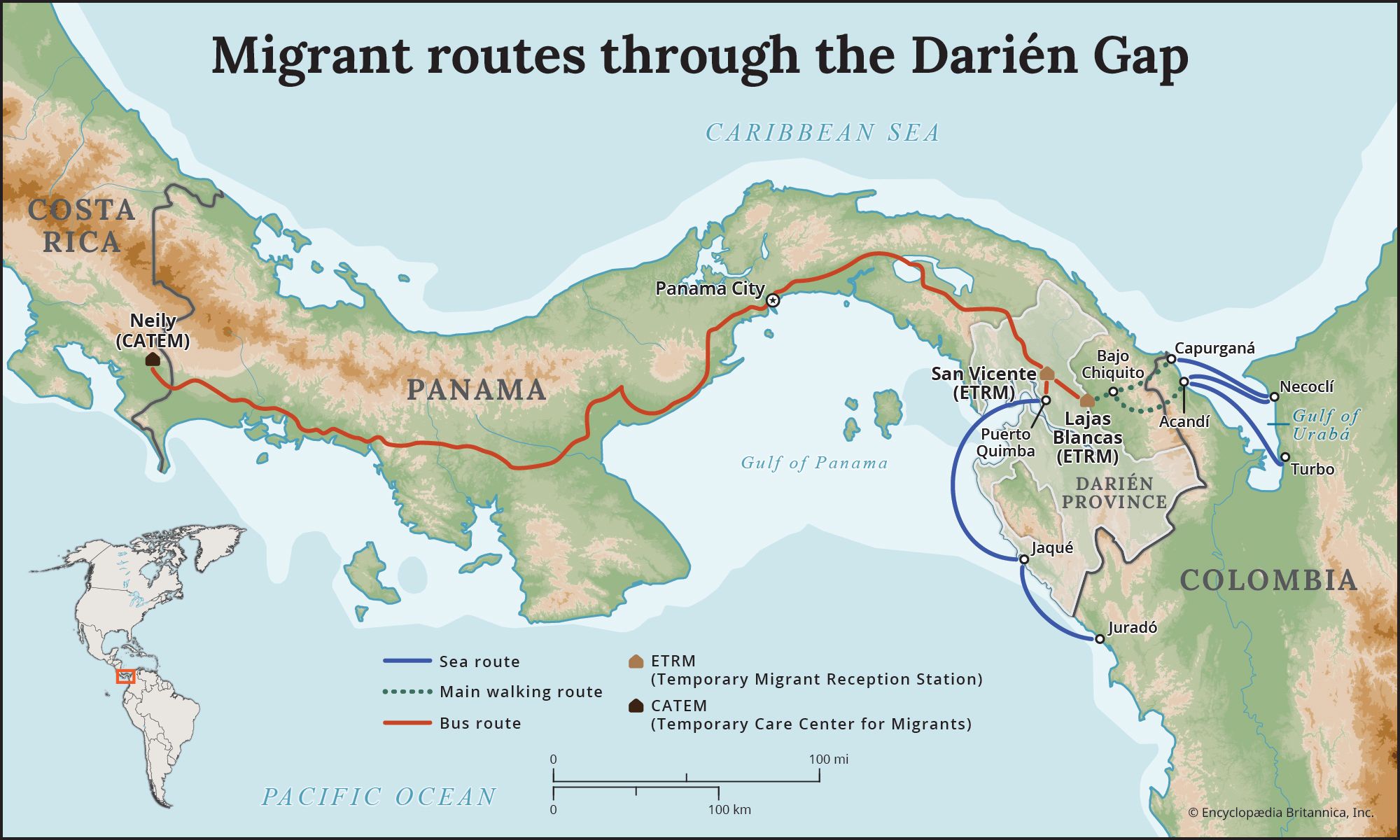
History of the Darien: Migrants, Routes, and Key Facts

The Darién is a unique and challenging region that plays a crucial role in the migration dynamics between South and North America. It is characterized by its dense jungle, treacherous rivers, and mountainous terrain, which together form the Darién Gap, a stretch that poses significant obstacles for migratory flows. Understanding the history and significance of the Darién is essential for grasping the complexities of migration patterns, as well as the environmental and social implications of traversing this region.
This article will explore the Darién through various lenses, including its historical significance, migration routes, the challenges faced by migrants, and the current state of affairs in the region. By examining the intricate relationship between local Indigenous communities and external influences, we can better comprehend the multifaceted nature of the Darién and its ongoing impact on migration patterns and environmental conservation.
Overview of the Darién Gap
The Darién Gap serves as a natural barrier between Panama and Colombia, stretching approximately 60 miles (100 km) and presenting an impenetrable obstacle for vehicles and many travelers. This area is primarily composed of dense forests, swamps, and mountainous terrain, creating challenging and hazardous conditions. Historically, the Darién has been viewed as a geographic stronghold, difficult to navigate due to both its physical characteristics and the diverse ecosystems it harbors.
As a part of the Pan-American Highway, the omission of a road through the Darién Gap has raised significant concerns regarding connectivity and accessibility. The road's absence has turned the area into an essential junction for migrants seeking routes to North America, forcing countless individuals to traverse unsafe paths through the bush, with little support or guidance.
Historical Significance of the Region
The Darién's rich history is intricately intertwined with the movement of peoples and the colonization efforts by European settlers. In the early 16th century, explorers, drawn by the allure of wealth and resources, sought to establish settlements and trade routes. However, the rugged conditions and hostile environment limited successful colonization and settlement in the Darién.
Over the centuries, the Darién has served various functions, from a refuge for Indigenous populations to a seldom-inhabited jungle that became a hotbed for illicit activities, including drug trafficking. The region's historical role highlights its strong connection to migration, trade, and struggle for territory, continuously shaping its present and future.
Indigenous Communities in the Darién
Indigenous communities such as the Embera and Kuna have inhabited the Darién for centuries, preserving their traditional cultures and practices despite external challenges. These communities have adapted to the environmental conditions of the Darién, utilizing their vast knowledge of plants and animals for sustenance and medicinal purposes. The Embera, for instance, are known for their intricate crafts and vibrant textiles, which reflect their connection to the land and nature.
Despite their resilience, Indigenous communities in the Darién face numerous threats to their way of life, including displacement due to infrastructure projects and encroaching settlements. Additionally, the tourism industry and demand for natural resources pose significant risks to their lands, culture, and autonomy. It is essential to recognize and promote the rights of Indigenous populations within the Darién, enabling them to participate in decision-making processes that affect their homeland and future.
Migration Patterns and Routes
Migration through the Darién has become increasingly common as individuals and families seek better opportunities and safety in North America. Migrants come from various countries, often facing numerous challenges along their journey. With no established routes or support systems, many individuals rely on guides to help navigate the treacherous terrain.
- Increased Migration: Over the last decade, the number of migrants traversing the Darién Gap has grown significantly, driven by social, political, and economic factors.
- Routes Taken: Migrants typically enter the Darién from Colombia, utilizing a range of paths that traverse jungles and rivers, making the journey fraught with risk.
- Dangerous Conditions: The journey through the Darién is perilous, with threats such as injuries, wildlife encounters, and the risk of exploitation by smugglers.
This migration pattern not only highlights the resilience and determination of individuals in search of a better life but also raises questions about humanitarian support, safety, and border management in the Americas. Various organizations are working to provide aid and resources to migrants as they navigate this dangerous region.
Environmental Considerations
The Darién is a region of exceptional ecological diversity, home to numerous rare and endangered species. The impact of migration and potential development projects raises significant environmental concerns. Deforestation, habitat loss, and pollution threaten fragile ecosystems, prompting debates around sustainable development practices.
Efforts to balance human activity with environmental conservation are ongoing, focusing on preserving the unique habitats within the Darién. The region's delicate balance is at risk, and any large-scale construction or exploitation of natural resources may have irreversible effects on biodiversity and local communities.
The Impact of Development Projects
Discussions regarding development projects in the Darién region have sparked controversial debates over the past century. Initial plans for building a continuous highway were proposed in the 1920s but have faced numerous interruptions and changes due to environmental concerns and the rights of Indigenous peoples.
Modern plans continue to arise amidst demands for better infrastructure and increased security, yet they often come with serious implications for the local ecosystems and the autonomy of Indigenous communities. Critics argue that any large-scale infrastructure in the Darién could exacerbate existing issues, such as drug trafficking and illegal immigration, while proponents claim it could facilitate trade and provide economic opportunities.
Challenges Faced by Migrants
Migrants traveling through the Darién Gap face extreme risks and challenges that can threaten their health and safety. Some of the most pressing issues include:
- Health Risks: The remote wilderness poses dangers such as tropical diseases, injuries, and dehydration.
- Exploitation: Vulnerable migrants are often preyed upon by human traffickers and smugglers, leading to further violations of their rights.
- Weather Conditions: Harsh weather, including heavy rains and extreme heat, increases the risks associated with trekking through the Darién.
Despite the numerous hurdles, many migrants are determined to continue their journey, driven by hope for a better future. Understanding their struggles is essential for developing effective humanitarian responses to their needs.
Current Situation and Future Prospects
The current situation in the Darién reflects a complex interplay of migration, environmental concerns, and socio-economic realities. As the number of migrants traversing the Darién Gap continues to rise, governments and non-governmental organizations are grappling with how best to respond to these challenges.
Future prospects for migrants will depend heavily on increased international cooperation, humanitarian aid efforts, and sustainable development initiatives. By prioritizing the protection of migrants’ rights, promoting environmental conservation, and respecting Indigenous practices, it may be possible to pave a more promising path through the Darién for those seeking a better life.
Conclusion
The Darién region serves as a crucial intersection of migration, culture, and environment. The challenges faced by migrants daring to traverse the perilous Darién Gap are significant, but so are the opportunities for change through advocacy and understanding. By examining the history and complexities of the Darién, we can gain insight into the greater migration dynamics from South America to North America, as well as the need for responsible stewardship of the environment and respect for Indigenous rights.
As discussions around development continue and migration pressures mount, it is vital to acknowledge the unique challenges and legacies of the Darién region. By working together across borders and in partnership with local communities, we can strive for a future that prioritizes humanitarian needs, environmental sustainability, and the richness of Indigenous cultures found within the Darién.
Did you find this article helpful? History of the Darien: Migrants, Routes, and Key Facts See more here Education.
Leave a Reply






Related posts